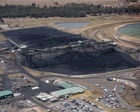Effect of Propagating Dopant Reactivity on Lattice Oxygen Loss in LLZO Solid Electrolyte Contacted with Lithium Metal
Advanced Energy Materials, EarlyView.

The decomposition of Nb-substituted LLZO solid electrolytes is reported through a propagating reaction between Nb5+ dopants and the Li metal electrode. This work suggests dopants that segregate to interfaces/grain boundaries in LLZO will exhibit reactivity that can propagate into bulk and shed light on new mechanisms for the problematic role of oxygen that may affect the stability of other oxide-based solid electrolytes as well.
Abstract
Lithium lanthanum zirconium oxide (LLZO) is widely known as the most stable solid electrolyte against lithium metal electrodes. This thermodynamic stability can be lost by the presence of dopants which are required to stabilize the cubic phase of LLZO and can be reduced by lithium metal. However, the role of oxygen in such reactions is taken for granted. In this work, the reduction of Nb-substituted LLZO (Nb-LLZO) is explored by Li metal and shows that interfacial reactions propagate and lead to the decomposition with substantial Nb5+ reduction deep into the bulk electrolyte. Scanning Transmission Electron Microscopy with Energy Dispersive X-ray Spectroscopy and thermogravimetric analyses show much of the reduction is due to oxygen vacancies formed, leading to increased electronic conductivity mapped with conductive Atomic Force Microscopy. Density functional theory calculations indicate oxygen release is favored by increased excess lithiation of Nb-LLZO. Electrochemical impedance of polycrystalline Nb-LLZO shows the continuous evolution of ionically resistive interphases near the lithium metal interface with Nb-LLZO while single crystals show little reactivity at room temperature and self-limiting reduction at 60°C. This work underlines the role of grain boundaries in propagating destructive solid electrolyte reactions and highlights previously unseen mechanisms involving lattice oxygen in LLZO.











































































































































